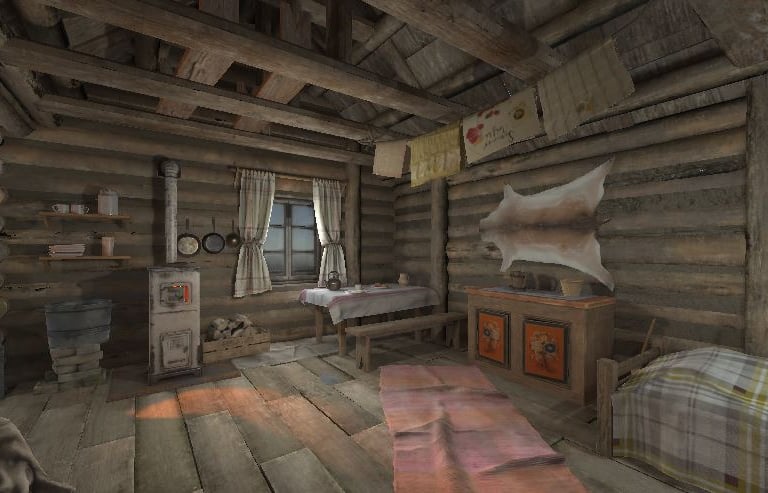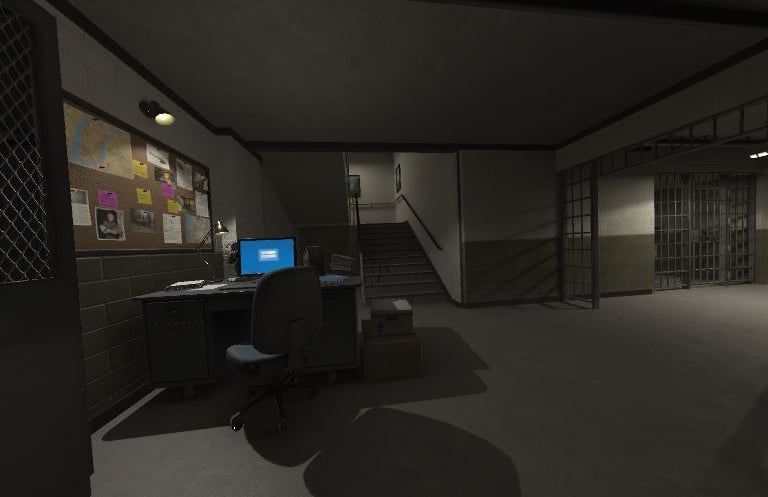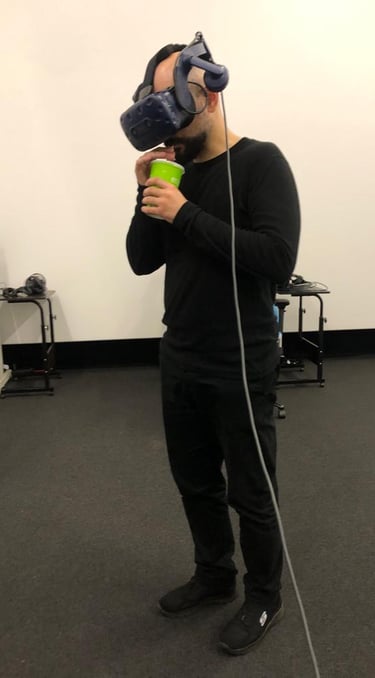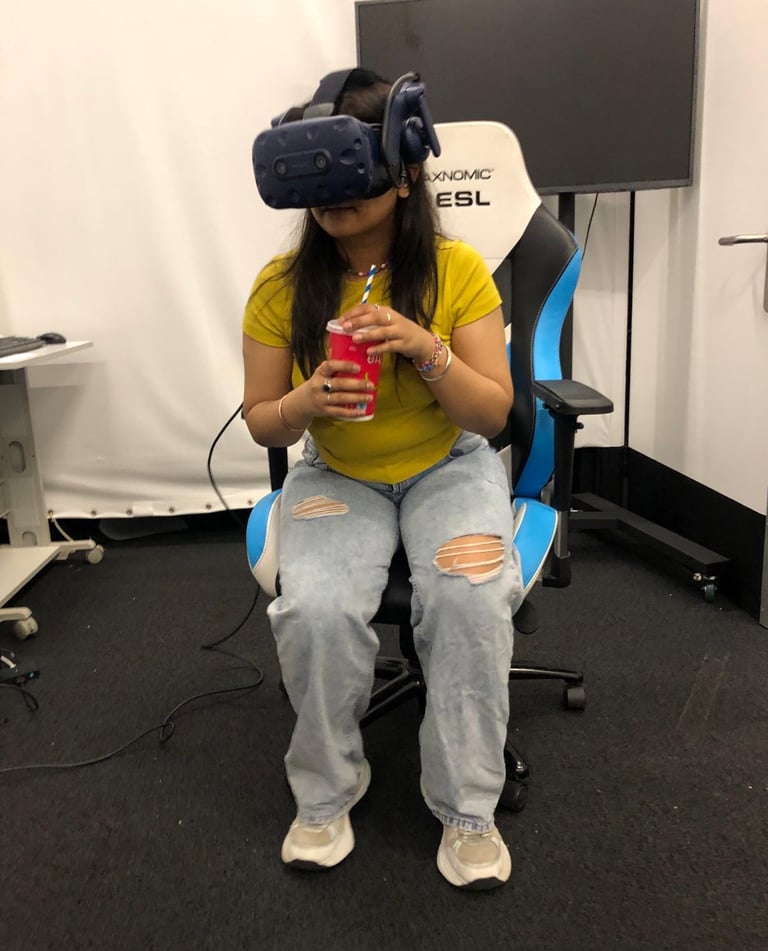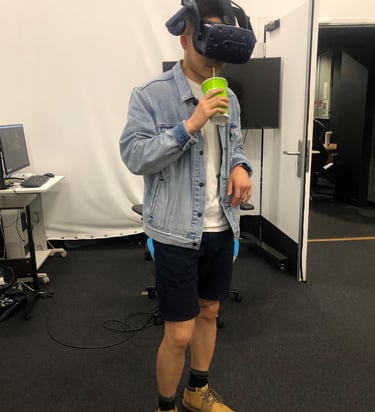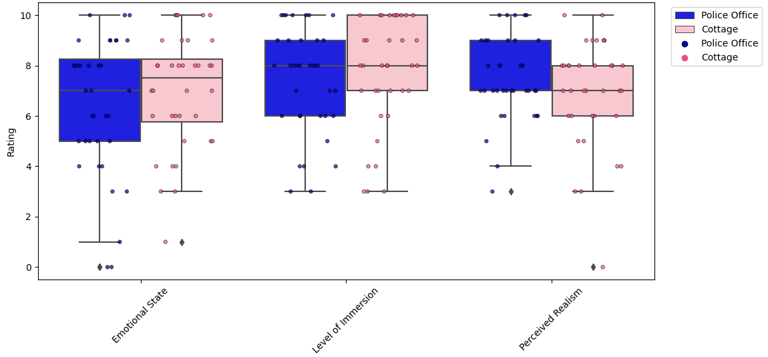Exploring Environmental Cues and Coffee Taste Perception in Virtual Reality
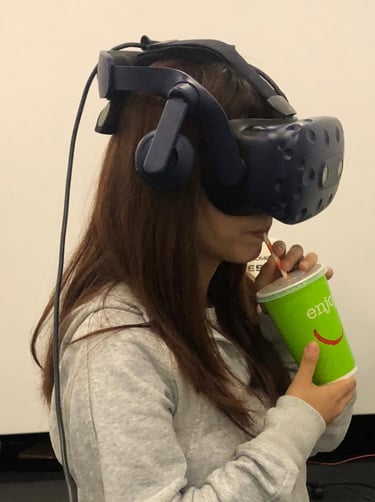

In the current era of technological advancement and digital tools, the utilization of virtual reality (VR) is rapidly expanding across diverse industries. This study investigates how immersion in VR environments, simulating stressful and relaxing real-life scenarios, influences people's perception of coffee taste and explores the impact of immersive VR experiences on individuals' overall interpretation of coffee as a beverage. With 36 participants, two VR settings, a serene forest cottage and a stressful police office, were tested and completed with customized sounds to enhance the user experience. This study used Unity 3D software and an HTC Vive Pro headset in the Immersive Technology Laboratory at the University of York.
After experiencing each environment, participants were asked to rate the intensity of five attributes of the coffee taste, including sweetness, bitterness, acidity, body/richness, and aftertaste. Significant differences were observed in sweetness (Cottage perceived as sweeter), bitterness (Police Office perceived as more bitter), acidity (Police Office perceived as higher in acidity), and aftertaste (Police Office with a more intense aftertaste), with no significant difference in body/richness. These findings shed light on how environmental cues influence taste perception and provide insights for sensory research and product design.
The research also examines participants' experiences, including emotional states, level of immersion, and perceived realism in VR environments. The analysis reveals consistent emotional responses and immersion levels in both VR settings, with slight variations in perceived realism. These findings significantly affect human-computer interaction, psychology, engineering, and all new technology fields. It improves our understanding of how VR impacts perceptions and emotions and guides the development of more effective VR experiences.
